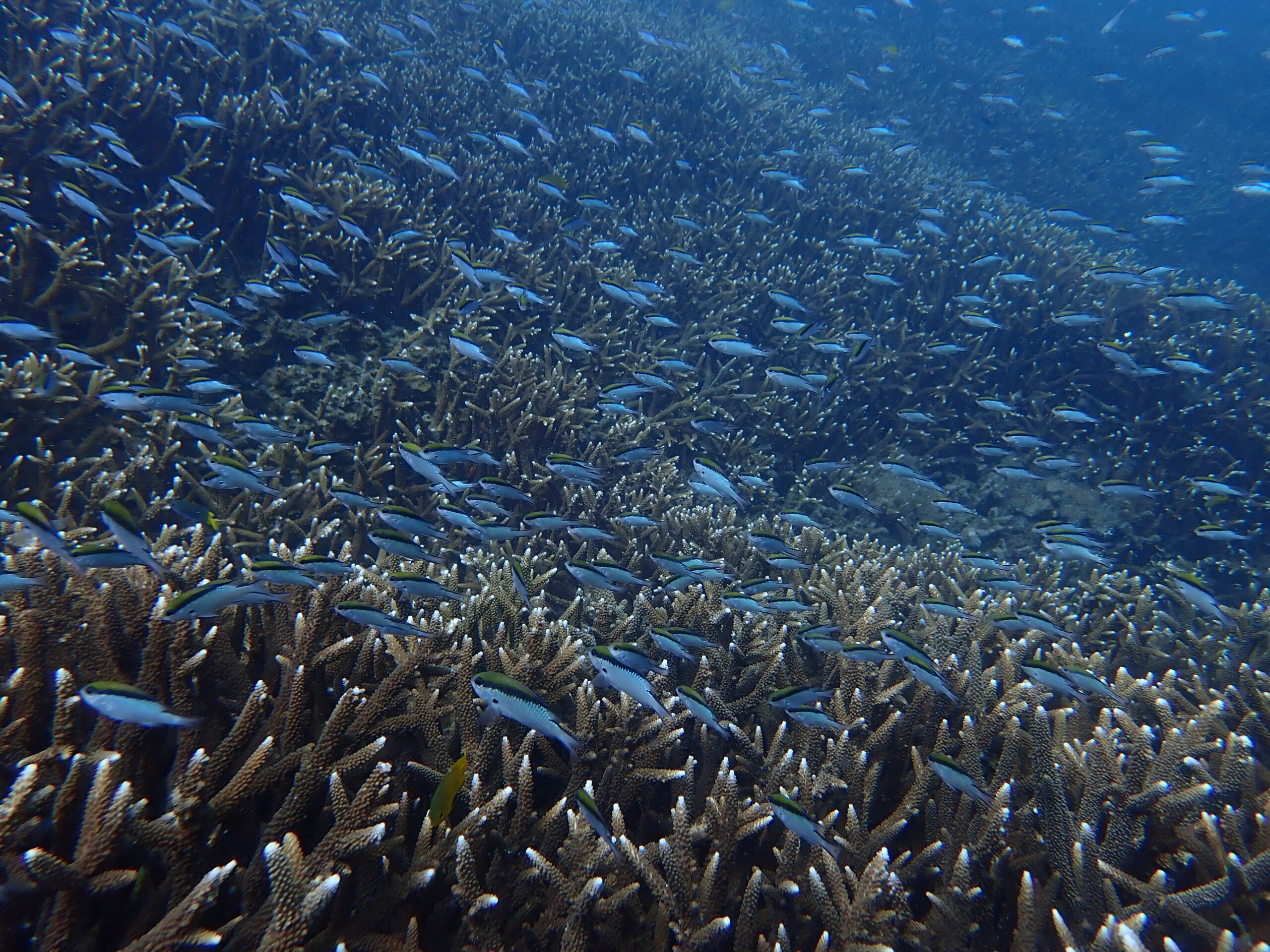From coral trout and snapper to wrasses, butterfly fish and damselfish – the inshore reef habitats of Great Barrier Reef islands are known for their complex and rich fish communities.
This month our scientists are conducting visual surveys of reef fishes and benthic habitats of eight inshore island groups in the Great Barrier Reef, building on a 20-year long-term monitoring program at four of the island groups and four new monitoring sites.
The island reefs surveyed are high-value and high-use for tourism and recreational fishing, with areas monitored in no-take marine reserves and zones open to fishing – making the data highly valuable in understanding how fish communities change over time and how they benefit from marine reserves.
Lead researcher Dr Maya Srinivasan said while some reefs were degraded due to past impacts such as cyclones and coral bleaching, many reefs were in great condition with a variety of live coral and fish species.
The inshore fringing reef monitoring seeks to uncover important insights into fish communities in a range of different habitats, including nursery habitats such as mangroves and seagrasses, island fringing reefs, and deeper areas between reefs.
The program is part of the IMR Reef Fish Monitoring Project, funded by the partnership between the Australian Government’s Reef Trust with the Great Barrier Reef Foundation. This is a joint program managed by the Australian Institute of Marine Science, with support from TropWATER, University of the Sunshine Coast, Great Barrier Reef Marine Park and Queensland Agriculture.

